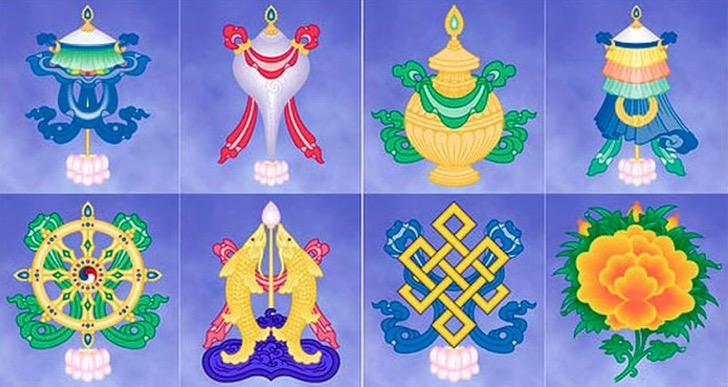Four Establishments of Mindfulness
(The four establishments of mindfulness focus on the body, feelings, mind, and phenomena (dhamma, dharma). To “establish mindfulness” means to place our mindfulness on an object comprehended by wisdom. )
Mindfulness of Feelings
Through mindfulness of feelings we understand how craving arises in response to various feelings, thus perpetuating saṃsāra. Feelings arise through contact with objects of the five senses. We become attached to pleasant feelings, have aversion for unpleasant ones, and are apathetic toward neutral feelings. We strongly grasp the I that experiences these feelings. Afflictions become more powerful, karma is created, and saṃsāra continues. In this way, mindfulness of feelings makes us aware of the true origins of duḥkha (unsatisfactoriness).
To establish mindfulness of feelings, we contemplate our feelings, examining what we feel now, what we felt in the past, and what we expect to feel in the future. The three feelings are correlated with the three types of duḥkha: painful feelings with the duḥkha of pain; pleasant feelings with the duḥkha of change; and neutral feelings with the duḥkha of pervasive conditioning.
We observe that the experience of pleasant feelings eventually changes into the experience of painful ones. Because neutral feelings are unstable and polluted by ignorance, they contain the seed for manifest suffering; the suffering of pain is always ready to flare up. In this way, we see all these feelings as unsatisfactory, and aspiration for liberation grows in us. Our feelings continuously change with pain, pleasure, and neutral feelings following in quick succession. Because feelings are transient, there is no sense in being attached to pleasant ones or upset by unpleasant ones.

Observing the causes of feelings, we understand how the interdependence of object, cognitive faculty, and consciousness produce contact and thus feeling. Observing the results of feelings helps us to understand craving and clinging and how these perpetuate saṃsāra (cyclic existence).
Respond with Mindfulness
Responding to feelings with mindfulness instead of craving and clinging stops feelings from instigating afflictions. When a painful or pleasant feeling arises, we turn our mindfulness to observe it. Investigating its nature, we see it isn’t one solid entity. It is a flowing process, a series of moments of pain or pleasure.
Each moment differs slightly from the preceding and following moments. In the case of pain, what appeared to be an unchanging, unified, painful feeling is now seen as a mental construct projected on a series of moments that have a similar quality.
Furthermore, we observe there are different kinds of pain—throbbing, prickling, stabbing, aching, and so on. When we make painful feelings the object of mindfulness, we no longer feel weighed down or tormented by them. Interestingly, many doctors have found that mindfulness meditation is a great aid for people suffering from chronic pain.
Worldly and Spiritual
The Pāli scriptures say pleasant, painful, and neutral feelings each have two subdivisions: worldly and spiritual. Worldly happiness arises from acquiring desirable sense objects; spiritual happiness arises from having positive mental factors such as concentration, faith, and love.
Worldly pain is triggered by contact with undesirable sense objects or from not acquiring what we want. Spiritual pain may arise when we aspire for states of concentration or for attainments that we have not yet actual- ized. It may also arise from regret regarding harmful actions we have done. Here spiritual pain can motivate us to engage in virtuous actions to actualize our spiritual goals.
Worldly neutral feelings arise when we are oblivious to the results of our actions, leaving us apathetic, complacent, and lazy. Spiritual neutral feelings are, for example, the equanimity of the fourth jhāna (meditative state).
Worldly pleasant, painful, and neutral feelings are the source of afflic- tions if they are not observed with mindfulness, while spiritual pleasant, unpleasant, and equanimous feelings are beneficial and can lead us to fur- ther our practice of virtue.
At a certain point when establishing mindfulness of feelings, we stop focusing on feelings as being pleasant, unpleasant, or neutral and stop observing their arising and passing away. Instead we become mindful simply that there is feeling so as to cultivate bare knowledge and constant mindfulness. Here feelings are experienced as impersonal phenomena. We do not identify with them and cease to grasp them as I, mine, or my self.






